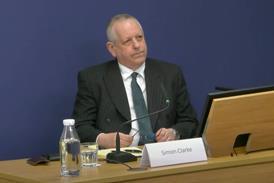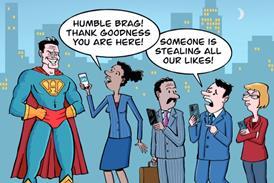In our hyper-connected world, where digital devices and online platforms are integral to both professional and personal life, the phenomenon of digital burnout has become increasingly prevalent. From working on a laptop to unwinding in front of a television or scrolling on your phone, spending too much time using screens has led to feelings of physical and mental exhaustion.

Digital burnout – characterised by these feelings of exhaustion, detachment, and inefficacy resulting from excessive digital engagement – poses significant challenges to an individual’s wellbeing and productivity. It is crucial to not only understand the causes and consequences of digital burnout, but to implement effective strategies to mitigate its impact.
What is digital burnout?
Digital burnout refers to a state of mental, emotional, and physical exhaustion caused by prolonged and excessive use of digital technologies. It is characterised by feelings of overwhelm, fatigue, disengagement, and a sense of being constantly "plugged in" or tethered to digital devices.
One primary contributor is the constant accessibility and expectation for connectivity in today's society. The pervasive use of smartphones, social media platforms, and digital communication tools blurs the boundaries between work and leisure, leading to an 'always-on' mentality. As a result, individuals struggle to disengage from online platforms, leading to chronic stress and exhaustion.
Moreover, the relentless flow of information and stimuli in the digital realm can overwhelm individuals' cognitive capacities, resulting in information overload. The incessant notifications, emails, and social media updates bombard our senses, impeding our ability to focus, prioritise, and engage. Additionally, the pressure to maintain an online presence and project a curated image on social media platforms can exacerbate feelings of inadequacy and self-comparison, further contributing to burnout.
Digital burnout is not limited to any particular demographic or age group and can affect individuals across various professions and lifestyles. It is increasingly prevalent in today's hyper-connected world, where technology plays an integral role in almost every aspect of daily life.
The term encompasses a range of symptoms and experiences resulting from the pressures of navigating the digital landscape. These can include:
1. Information overload: Constant exposure to an overwhelming amount of information – such as emails, social media updates, news articles, and notifications – leading to difficulty in processing and managing information effectively.
2. Constant connectivity: The expectation to always be reachable, whether for work-related communication or social interactions, blurring the boundaries between work and personal life and making it challenging to disconnect and unwind.
3. Social media pressures: The pressure to maintain a curated online presence, fuelled by social media platforms, can contribute to feelings of inadequacy, comparison, and a fear of missing out (FOMO). This can lead to compulsive checking of social media feeds and seeking validation through likes and comments.
4. Mental and emotional strain: Prolonged exposure to digital technologies can take a toll on mental and emotional well-being, contributing to anxiety, depression, stress, and feelinwgs of isolation or loneliness.
5. Physical health impacts: Excessive screen time and sedentary behaviour associated with digital activities can have adverse effects on physical health, including eye strain, headaches, disrupted sleep patterns, and even musculoskeletal issues.
How can you combat digital burnout?
To mitigate the risk of digital burnout and cultivate a healthier relationship with technology, it is essential to adopt proactive strategies that promote balance and mindfulness in this digital age. Here are some steps individuals can take:
1. Establish boundaries: Set clear boundaries around digital usage by designating specific times and spaces for digital engagement and disengagement. Establish 'digital-free' zones in your home or workplace where devices are prohibited, allowing for uninterrupted relaxation and connection with loved ones.
2. Practice digital detox: Periodically disconnect from digital devices and platforms to recharge and rejuvenate. Schedule regular 'digital detox' days or weekends where you refrain from using smartphones, social media, and email, and engage in offline activities that bring joy and fulfilment.
3. Prioritise self-care: Make self-care a priority by incorporating activities that promote physical, emotional, and mental wellbeing into your daily routine. Practice mindfulness meditation, engage in regular exercise, ensure you get adequate sleep, and nourish your body with nutritious food to enhance resilience.
4. Cultivate digital mindfulness: Develop mindful awareness of your digital habits and their impact on your well-being. Practice conscious consumption by limiting mindless scrolling on social media, unsubscribing from unnecessary email lists, and curating your digital environment to reduce feeling overwhelmed by distractions.
5. Focus on real-life connections: Invest in nurturing meaningful, offline relationships and experiences that provide genuine connection and fulfilment. Prioritise face-to-face interactions with family, friends, and colleagues, and engage in activities that foster creativity, collaboration, and shared experiences.
6. Set realistic goals: Manage expectations and set realistic aims for your digital engagement to avoid feelings of inadequacy. Practice selective attention by focusing on tasks that align with your values, priorities, and long-term objectives. Learn to delegate or say no to non-essential commitments.
Conclusion
Digital burnout is a pervasive issue in today's society, fuelled by the relentless demands and pressures of the digital age. However, by understanding the causes and consequences of digital burnout – and implementing proactive strategies to promote balance – individuals can reclaim control over their digital lives and cultivate healthier boundaries with technology.
Addressing digital burnout involves implementing methods of managing technology use more mindfully, establishing healthy boundaries, practicing self-care, and finding ways to disconnect and recharge. By fostering this balanced approach to online consumption and prioritising well-being, individuals can mitigate the risk of digital burnout and cultivate a healthier relationship with technology.
For more articles like this, visit our website.
Advertise with us and put your firm in front of the largest pool of legal talent. Browse our new Gazette Jobs Media Kit 2024/25.
Find out more at recruiters.jobs.lawgazette.co.uk/, or contact us at sales@lawsociety.org.uk.
Special thanks to:
Nicholas Tyrrell, Managing Director, Mandaus Recruitment
Anna Godfrey, Specialist Legal Recruiter – East Anglia, Olsen Recruitment
Stephen Pamnani
Senior Recruitment Account Manager
stephen.pamnani@lawsociety.org.uk
Rakesh Punj
Recruitment Account Manager
rakesh.punj@lawsociety.org.uk
Sasha Kum
Account Manager
sasha.kum@lawsociety.org.uk

020 8049 2000





























No comments yet